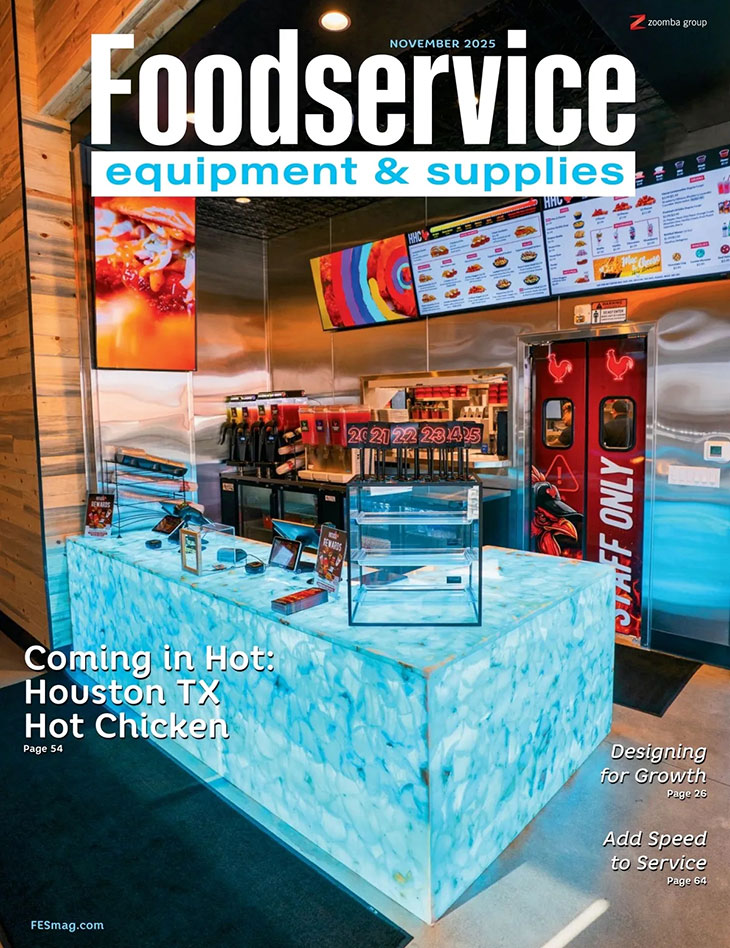What did we learn from the NRA’s 2025 State of the Industry report? What’s the actual cost of brand loyalty? How do restaurant operators see tariffs impacting their businesses? Answers to these questions and more This Week in Foodservice.
The National Restaurant Association released its 2025 State of the Industry study last week. It calls for industry sales to reach $1.5 trillion this year, which represents a 0.3% growth rate in real terms compared to 2024. Here are three other things we learned from the study.
- The more things change, the more they stay the same. In 2025, operators expect to face many of the same challenges they dealt with in 2024, as rising labor and food costs as well as recruiting and retaining employees remain operators’ top concerns.
- Attracting in-person diners will be a priority. Operators participating in the NRA’s study say increasing on-site traffic and getting diners back into their seats will be a key factor in their success. Not surprisingly, this was especially important to 90% of fine-dining operators and 87% of casual-dining operators.
- Value-oriented offerings will remain important for both consumers and operators. Per NRA data, 95% of operators say consumers are more value-conscious than they used to be. It’ should come as no surprise that 53% of operators added new deals, discounts, or value promotions in 2024 and 47% plan to do so this year.
Chad Moutray, vice president of knowledge and research for the NRA, takes a deeper dive into a handful of issues, including the increasing importance of off-premises dining and the role of emerging technologies in this SmartBrief article.
Foodservice News
- Why is driving brand loyalty so important to restaurants? It now costs 15 to 22 times more to recruit a new customer than to keep one, per data from Brand Keys. An increase in loyalty of 5% can grow lifetime profits per customer by as much as 86%. And, depending on the sector, a 2% increase in loyalty can be the equivalent of a 28% across the board cost reduction initiative. The study also looks at which restaurant chains are doing the best at driving customer loyalty by segment.
- C-stores are starting to work more frequently with local or regional operators to burnish their foodservice offerings. The latest example comes courtesy of Yatco, a Northeastern c-store. Developed in partnership with King Retail Solutions, Yatco’s latest store design includes space in the back of the store for a dual foodservice program from Rhode Island-based Coffee Connection and Slice It, C-Store Dive reports. Moving forward, every location Yatco builds will have a coffee or food partnership.
- One-third of independent restaurants expect sales declines from tariffs, per a Restaurant Dive story. Citing an Alignable study, the story notes that 30% of all small businesses expect sales to decrease should tariffs on Mexico, Canada and China go through. It’s also worth noting that 40% of small businesses expect no impact on sales if the tariffs are implemented.
- Via 313 Pizzeria received an infusion of capital worth $32.5 million, the company announced. The Detroit-style pizza chain has 23 locations across three states and plans to open more than 20 locations over the next three years.
- Chain restaurant designs are starting to value the employee experience as much as the guest. Take, for example, Popeye’s new kitchen design. It pairs new equipment and other technology with updated processes designed to make life easier for crew members, as Nation’s Restaurant News reports. In addition, Chick-fil-A’s spiffy new elevated drive-thru model features a dishwashing station with giant windows that provide some natural light and a view of the outdoors, something that was pretty uncommon for most restaurant chains.
- Rising paper costs continue to invite restaurants to re-think even the most basic aspects of their businesses. The latest example comes from Chick-fil-A, which is rolling out reusable drink caddies for its crew members to use when delivering orders to customer cars, per the company’s website. This was the idea of two franchisees who saw their paper costs growing significantly over time. The company estimates a location will keep six to 12 of the reusable polypropylene caddies in rotation.
Economic News
- Small business owners’ outlook on the economy became cautious in January. Despite a slight decline in the NFIB Small Business Optimism Index, the study shows operators remain optimistic for the most part. The uncertainty index increased as business owners report struggles in finding the right people to hire and they now plan fewer capital investments in the coming months.
- Consumer borrowing increased last year. In 2024, consumer credit climbed 2.4%, per the U.S. Federal Reserve. Revolving and nonrevolving credit increased 4.8% and 1.6%, respectively. During the fourth quarter, consumer credit increased 4.2%, while in December it increased at a seasonally adjusted annual rate of 9.6%.
- The U.S. economy added 143,000 jobs in January, per data from the U.S. Bureau of Labor Statistics. The unemployment rate edged down to 4.0%. Job gains occurred in health care, retail trade, and social assistance. Economists had projected the unemployment rate would stay at 4.1% and the economy would add 170,000 jobs, per CNN. Overall, hiring has slowed a little, but growth remains strong enough to fuel consumer spending and put the economy on track for a soft landing, the CNN story adds.
- Based on the strength of service-providing companies, private-sector employers added 183,000 jobs in January and annual pay increased 4.7%, per the ADP National Employment Report. This beat expectations from economists polled by Dow Jones, which had anticipated a gain of 150,000 jobs, per CNBC. Goods-producing companies lost a net 6,000 jobs. In contrast, service-providing companies added 190,000 jobs, including 54,000 in the leisure/hospitality sector.
- The number of job cuts announced by U.S. employers declined 40% in January 2025 compared to the same month in 2024, per data from Challenger, Gray & Christmas. Still, January’s 49,795 cuts for the month were 28% greater than what was announced in December.
- Initial jobless claims climbed by 11,000 for a total of 219,000 for the week-ending February 1, 2025, per data from the U.S. Department of Labor. The 4-week moving average was 216,750, an increase of 4,000 from the previous week. Analysts had projected only 213,000 new applications, per the Associated Press. Still, the number of claims remains low.
- Consumer sentiment darkened in February, per data from the University of Michigan. All five components of its Index of Consumer Sentiment study declined for the month as it reached its lowest level since July 2024. Driving the decline is pessimism over inflation, as Yahoo! Finance reports. The study also showed consumer concern over a variety of economic-related issues, including the potential impact of tariffs on their personal finances.



